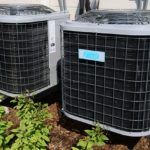The Most Common Air Conditioner Problems
 Air conditioning is an absolute necessity in the months of summer, and things can get extremely uncomfortable when your AC stops working. Repairs can become expensive, which is why you must keep your air-conditioner in running condition with regular maintenance. Here is a list provided by Air Conditioning Central Coast of the most common issues that often arise with air conditioners.
Air conditioning is an absolute necessity in the months of summer, and things can get extremely uncomfortable when your AC stops working. Repairs can become expensive, which is why you must keep your air-conditioner in running condition with regular maintenance. Here is a list provided by Air Conditioning Central Coast of the most common issues that often arise with air conditioners.
1. Filter
An air conditioner will stop running properly when the filter is dirty or clogged. It is important to refer to the recommendations of the manufacturer to find out how often the air filter should be changed. Dirty air filters will reduce airflow and cause your air conditioning system to freeze.
2. Thermostat
Always make sure the thermostat is on, that the inside is kept clean, it is level and at the right setting. If the issue persists, there might be another problem.
3. Drainage
Similar to the filter, drain lines can clog up with dust, lint, and dirt. When clogged you may notice that your drain pan fills up, which means water will start leaking out. This can cause damages to your AC unit.
4. Refrigerant Leaks
If the coolant has started to leak in your AC unit, the system cannot function properly, which will result in temperature fluctuations. The costs of these repairs vary according to the location where the coolant is leaking from. Having your AC unit checked every 6 to 12 months by a certified AC technician is highly advisable.
5. Fuses Or Breakers
Fuses and breakers perform the role of safeguarding the AC unit’s compressor or motor from overheating. In most cases, if the motor has stopped working, the breaker will be the first part that an HVAC technician will check.
6. Compressor
The compressor is the part that supplies the refrigerant with energy and directs the coolant through the AC unit’s coils in order to carry out what is known as heat exchange. When the compressor stops working, your AC will not be able to cool your home. When the refrigerant starts running low, the compressor starts running hot which will eventually cause it to seize. When the refrigerant levels are too high, it will flow back into the compressor, which will also cause this part to fail.
7. Capacitors
When the capacitors stop working, the motor that provides power to the fans and compressor won’t work. The Start Capacitor activates the motor with a jolt, while the Run Capacitor will provide a sequence of jolts that keeps the motor running. The AC unit will not be able to operate efficiently if either of the capacitors burns out.
8. Condenser Coils
These are situated on the outer part of the compressor, which means they are susceptible to the build-up of dirt and debris. You can clean this part with a hose every few months, yet when they become too dirty, you will need to call out an HVAC technician to have the unit professionally cleaned with a special type of chemical cleaner.
9. Evaporator Coils
The evaporator coils operate by absorbing heat that is present in the surrounding air where it is then cooled and sent back into your home through air ducts. These coils over time can corrode. If the coils are inside your home, they will usually only need maintenance every 2 to 3 years.